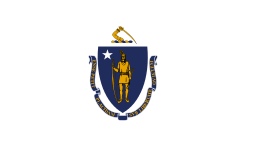Samuel S. Conner
| Samuel Shepard Conner | |
|---|---|
| Member of the U.S. House of Representatives from Massachusetts's 19th district | |
|
In office March 4, 1815 – March 3, 1817 | |
| Preceded by | James Parker |
| Succeeded by | Joshua Gage |
| Personal details | |
| Born |
1783 Exeter, New Hampshire |
| Died |
December 17, 1820 Covington, Kentucky |
| Political party | Democratic-Republican |
| Spouse(s) | Elizabeth Denniston[1] |
| Alma mater | Phillips Exeter Academy, Yale College |
| Profession | Attorney |
| Military service | |
| Allegiance | United States of America |
| Service/branch | United States Army |
| Years of service | March 12,[2] 1812[3]-July 14, 1814 |
| Rank | Major, Lieutenant Colonel |
| Commands | Twenty-first Infantry, Thirteenth Infantry |
| Battles/wars |
War of 1812 Battle of York[2] |
Samuel Shepard Conner (ca. 1783 – December 17, 1820) was a U.S. Representative from Massachusetts.
Born in Exeter, New Hampshire, Conner attended Phillips Exeter Academy in 1794. He was graduated from Yale College in 1806. He studied law.
Conner married Elizabeth Denniston of Albany, New York.[3] He was admitted to the bar and commenced practice in Waterville, Maine (at that time a district of Massachusetts), in 1810. Conner served in the War of 1812. Conner was first a Major of the Twenty-first Infantry. In the beginning of 1813 Conner served as Aide-de-camp to General Henry Dearborn.[3] He was one of the American officers who accepted the British surrender at the Battle of York.[2] He was promoted to lieutenant colonel of the Thirteenth Infantry March 12, 1813. He resigned July 14, 1814. He resumed the practice of law in Waterville, Maine.
Conner was elected as a Democratic-Republican to the Fourteenth Congress (March 4, 1815 – March 3, 1817). He was appointed surveyor general of the Ohio land district in 1819. He died in Covington, Kentucky, December 17, 1820.
Sources
- United States Congress. "Samuel S. Conner (id: C000692)". Biographical Directory of the United States Congress.
| United States House of Representatives | ||
|---|---|---|
| Preceded by James Parker |
Member of the U.S. House of Representatives from Massachusetts's 19th congressional district March 4, 1815 - March 3, 1817 |
Succeeded by Joshua Gage |
| Military offices | ||
| Preceded by |
Major of the Twenty-first Infantry March 12, 1812 – March 12, 1813 [4] |
Succeeded by John Johnson[4] |
| Preceded by |
Aide-de-camp to General Henry Dearborn 1813 – 1813 |
Succeeded by |
| Preceded by John Christie[5] |
Lieutenant Colonel of the Thirteenth Infantry March 12, 1813– July 14, 1814 |
Succeeded by R. N. Malcolm[6] |
Notes
- ↑ Dexter, Franklin Bowditch (1912), Biographical sketches of the graduates of Yale college with annals of the College History Vol VI, New Haven, CT: Yale University Press, p. 24.
- 1 2 3 Coues, Elliott (1895), The expeditions of Zebulon Montgomery Pike: to headwaters of the Mississippi River, Volume 1, New York, N.Y.: Francis. P. Harper, p. ciii.
- 1 2 3 Dexter, Franklin Bowditch (1912), Biographical sketches of the graduates of Yale college with annals of the College History Vol VI, New Haven, CT: Yale University Press, p. 23.
- 1 2 Heitman, Francis Bernard (1890), Historical register of the United States Army: from its organization, Washington, D.C: The National Tribune, p. 60.
- ↑ Powell, William Henry (1900), List of officers of the army of the United States from 1779 to 1900, New York, N.Y.: L. R. Hamersly & Co., p. 53.
- ↑ Heitman, Francis Bernard (1890), Historical register of the United States Army: from its organization, Washington, D.C: The National Tribune, p. 53.
![]() This article incorporates public domain material from the Biographical Directory of the United States Congress website http://bioguide.congress.gov.
This article incorporates public domain material from the Biographical Directory of the United States Congress website http://bioguide.congress.gov.

